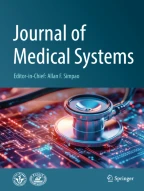Abstract
In the present study, the Singular Spectrum Analysis (SSA) is applied to sleep EEG segments collected from healthy volunteers and patients diagnosed by either psycho physiological insomnia or paradoxical insomnia. Then, the resulting singular spectra computed for both C3 and C4 recordings are assigned as the features to the Artificial Neural Network (ANN) architectures for EEG classification in diagnose. In tests, singular spectrum of particular sleep stages such as awake, REM, stage1 and stage2, are considered. Three clinical groups are successfully classified by using one hidden layer ANN architecture with respect to their singular spectra. The results show that the SSA can be applied to sleep EEG series to support the clinical findings in insomnia if ten trials are available for the specific sleep stages. In conclusion, the SSA can detect the oscillatory variations on sleep EEG. Therefore, different sleep stages meet different singular spectra. In addition, different healthy conditions generate different singular spectra for each sleep stage. In summary, the SSA can be proposed for EEG discrimination to support the clinical findings for psycho-psychological disorders.
Similar content being viewed by others
References
Susmakova, K., Human sleep and sleep EEG. Meas. Sci. Rev. 4(2):59, 2004.
Kryger, M. H., Roth, T., and Dement, W.C., Principles and practice of sleep medicine (4th Ed.). Philadelphia: Elsevier Saunders. ISBN 978-0-7216-0797-9, 2005.
Venkatachalam, V., and Aravena, J. L., Nonstationary signal classification using pseudo power signatures: the matrix SVD approach. IEEE Trans. Circuits Syst., 2 Analog Digit. Signal Process. 46(12), 1999.
Celka, P., and Colditz, P., A Computer-aided detection of EEG seizures in infants: a singular-spectrum approach and performance comparison. IEEE Trans. on BME 49(5):455, 2002.
Hassanpour, H., Mesbah, M., and Boashash, B., Time-frequency feature extraction of newborn EEG seizure using SVD based techniques. EURASIP J. Appl. Signal Process. 16:2544–2554, 2004.
Aydın, S., A new combination: scale-space filtering of projected brain activities. Med. biol. Eng. Comput. (MBEC). 47(4):435–440, 2009. doi:10.1007/s11517-009-0450-3.
Aydın, S., Comparison of basic linear filters in extracting auditory evoked potentials. Turkish J. Elec. Engin. Comput. Sci. 16(1):111–123, 2008.
Marzano, C., Ferrara, M., et al, Quantitative EEG in insomnia: a new window on pathophysiological mechanisms. Curr. Pharm. Des. 14(32):3446–55, 2008.
Broomhead, D.S., and King, G.P., Extracting qualitative dynamics from experimental data. Physica, D. 20:217–236, 1986.
Hagan, M. T., Demuth, H. B., and Beale, M. H., Neural network design. Boston: PWS Publishing, 1996.
Richard, P. B., Fast training algorithms for multi layer neural nets. IEEE Trans. Neural Netw. 2:346–354, 1991.
Gulbag, A., and Temurtaṣ, F., A study on quantitative classification of binary gas mixture using neural networks and adaptive neuro fuzzy inference systems. Sens. Actuators, B. 115:252–262, 2006.
Temurtaṣ, F., Tasaltın, C., Temurtas, H., et al: Fuzzy logic and neural network applications on the gas sensor data: concentration estimation. Lect. Notes Comput. Sci. 2869:179–186, 2003.
Saraoǧlu, H. M., and Edin, B., E-Nose system for anesthetic dose level detection using artificial neural network. J. Med. Syst. 6:475–482, 2007.
Acknowledgements
The authors would like to thank Prof. Dr. Fuat ÖZGEN of the Psychiatry Department, who have performed the recordings at the Gülhane Military Medical Academia.
Author information
Authors and Affiliations
Corresponding author
Rights and permissions
About this article
Cite this article
Aydın, S., Saraoǧlu, H.M. & Kara, S. Singular Spectrum Analysis of Sleep EEG in Insomnia. J Med Syst 35, 457–461 (2011). https://doi.org/10.1007/s10916-009-9381-7
Received:
Accepted:
Published:
Issue Date:
DOI: https://doi.org/10.1007/s10916-009-9381-7
